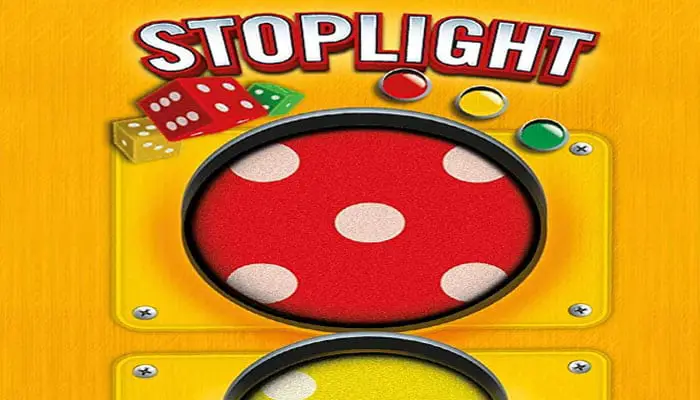

Components
- Green plush die
- Yello plush die
- Red plush die
- Point Tokens
- Instructions
Game Play


One player rolls the dice. When the dice stop, all players play at the same time. Put your hand on the right die!
If the red die shows the highest number, put your hand on it! (Even if tied, like: 6 1 6)
If the yellow die shows a number between the numbers on the other two dice, put your hand on it! (Even if tied, like: 335, and even if the red die is the lowest and the green one the highest).
If the green die shows the lowest number, put your hand on it! (Even if tied, like: 2 4 2).
If there are no correct dice to put your hand on, raise both your hands and yell "Stop!".
You can put both of your hands on dice, but you can only touch one die with each hand (even if two dice are close together!).
Once you put your hand on a die, you cannot move it!

If two or more players touch the same die, the one who touched it first gets the points (the player whose hand is directly on the die).
After everybody has a chance to touch the dice, it's time to score points!
Remember: You don't take turns - it's all about being as fast as you can! Use the colored beads to keep track of your score. Each bead = 1 point.
You get 1 point for each correct die you touch.
But, you lose 1 point for each mistake you make!
If you're the first to yell "Stop!" you get 3 points.
But, if you yell "Stop!" when there are correct dice, you lose 3 points!
You can't lose points you don't have.
Pass the dice to the next player, who starts a new turn by rolling them.

End of the Game
The game ends when any player has 10 or more points: the player who has the most points wins!
For Experienced Players: the U-turn
If the dice show a pair (such as 2 2 5) all the rules reverse! In other words: place your hand on the red die if it shows the lowest number.
On the green die if it shows the highest number; on the yellow die if it shows a number equal to another die or not between the other two.
Continue Reading
